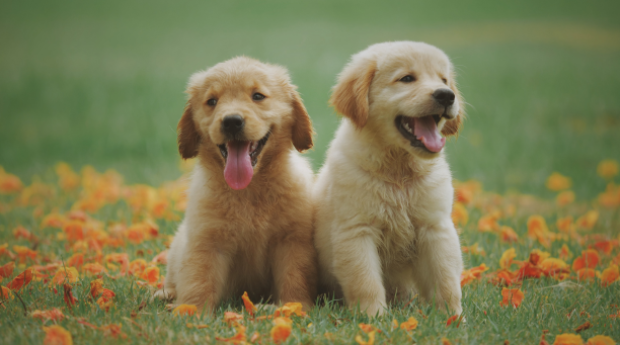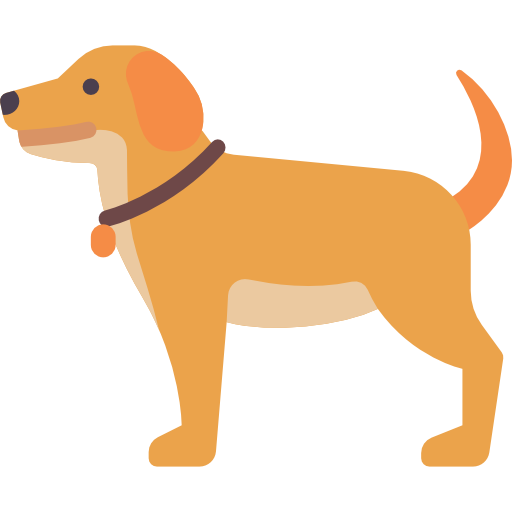No products in the cart.
Labrador Retriever Dog Breed: Price, Characteristics, & Appearance
The Labrador retriever, a sporting dog from Newfoundland, arrived in England around 1800 with fishermen. Renowned for excelling in field trials as a gun dog, this breed stands 21.5 to 24.5 inches tall, weighs 55 to 80 pounds, and is sturdier than other retrievers with distinctive features like an otter-like tail and a short, dense coat in black-brown or yellow. Characterized by ruggedness, even temperament, and gentleness, Labrador retrievers have served in military, police, rescue, and guide dog roles. The Labrador retriever, known for its high energy and love for water, gained immense popularity in the 1990s, becoming the most favored dog breed in the United States. Explore this easygoing breed, from its hunting history to caring for your Labrador retriever, and determine if it’s the right choice for you.
Labrador Retriever Images

Labrador Retriever Videos
Average sizes and life expectancy of Labrador Retriever

Labrador Retriever Height
22.5-24.5 inches (male)
21.5-23.5 inches (female)

Labrador Retriever Weight
65-80 Pounds (male)
55-870 Pounds (female)

Life Expectacy
12-12.5 Years (Male) 10-12 Years (Female)
Labrador Retriever Weather Adaptability
A thorough grasp of a Labrador retriever’s temperature tolerance is essential for ensuring their health and overall well-being. This knowledge not only helps prevent potential health issues related to extreme temperatures but also assists pet owners in selecting suitable activities, grooming practices, and living conditions for their Labrador retrievers. It goes beyond mere comfort; it’s a crucial factor in maintaining the health and happiness of your Labrador retriever companion.
Labrador Retriever Stats
Characteristics | Rating |
|
Dog Breed Group | Sporting Dog |
|
Coat length | Short |
|
Color | Black, chocolate, yellow |
|
UKC Class | Gun Dog |
|
Barking | 3 Star | Some Dogs can bark at every other person passing by, while others bark only in some conditions. Barkless breeds can also be vocal and use different sounds to express themselves. |
Grooming Needs | 1 Star | These breeds have lower breeding requirements. Occasional bathing and regular brushing are enough for a longer time. |
Social Needs | 3 star | Labrador retrievers are a very playful and happy breed and love to spend time with others. |
Labrador Retriever Traits
The Labrador retriever, a beloved companion, possesses distinctive physical and behavioral traits. While these characteristics may vary between show and working types, both share common features. Labrador retrievers are known for their friendly, sociable, and often exuberant personalities. Despite their love for human companionship, Labrador retrievers are fundamentally retrievers. Bred for generations to stay close to their human partners, they exhibit patience while waiting to fetch game birds from undergrowth upon request. Their highly cooperative and intelligent temperament, shaped by this historical role, makes them an excellent fit for various societal roles.
Friendliness | 5 stars |
Good With |
|
Other Dogs | 5 stars |
Good With Kids | 5 stars |
Barking | 4 stars |
Tendencies |
|
Energy Level | 5 stars |
Playfulness | 5 stars |
Note: The ratings given in the table are according to the American Kennel Labrador Standard.
References & Definition
- Dog Breed Group (AKC Class): Breed Standard and below information were taken from American Kennel Labrador Standard.
- Coat length
- Color
- Barking
- Grooming Needs
- Social Needs
- Size
- Friendliness
- Good With
- Other Dogs
- Good With Kids
- Barking
- Tendencies
- Energy Level
- Playfulness
Labrador Overview
Labrador Retriever History
Labrador Retriever Personality
Labrador Retriever Feeding & Diet
Labrador Retriever Health Issues
Labrador Retriever With Children And Other Pets
Labrador Retriever Training
Labrador Retriever Care
Labrador Retriever History
Labrador Retriever History
Labrador retrievers originated from the island of Newfoundland, situated off the northeastern Atlantic coast of Canada. Initially known as St. John’s dogs, these Labs served as companions and helpers to local fishermen in the 1700s. Working alongside their owners, they retrieved escaped fish and assisted with towing in lines, spending evenings with the fisherman’s family.
While the exact heritage is unclear, the St. John’s dog is believed to be interbred with the Newfoundland Dog and other local water dogs. Recognizing their utility and good temperament, English sportsmen imported a few Labs to serve as hunting retrievers. The second Earl of Malmesbury was among the first to do so, bringing St. John’s dogs to England around 1830.
The term “Labrador retrievers” was first coined by the third Earl of Malmesbury. Despite nearly facing extinction in the 1880s, the Malmesbury family and other English enthusiasts saved the breed. Government restrictions and tax laws in Newfoundland led to the breed’s disappearance. However, in England, Labrador retrievers survived, and the Kennel Club recognized them as a distinct breed in 1903. The American Kennel Club followed suit in 1917, with British Labrador retrievers imported to establish the breed in the U.S. After World War II, Labrador retrievers gained popularity, becoming the most registered dog with the American Kennel Club in 1991—a distinction they still hold today. Labrador retrievers are versatile, excelling in roles such as drug detection, search and rescue, therapy, assistance to those with disabilities, and hunting retrievers. They also shine in various dog competitions, including show, field, agility, and obedience, and remain a top choice in Canada and England.
Labrador Retriever Personality
Labrador Retriever Personality
The Labrador retriever has earned a well-deserved reputation as one of the most sweet-natured breeds. They are outgoing, eager to please, and friendly towards both people and other animals. In addition to their winning personality, Labrador retrievers possess the intelligence and willingness to please, making them easy to train.
Due to their abundant energy and exuberance, training is essential for this breed. With a working heritage, Labrador retrievers are inherently active, requiring both physical and mental stimulation to maintain their happiness. While there is some variability in the activity levels of Labrador retrievers—some being rowdy and others more laid back—all thrive on engaging activities.
Labrador Retriever Feeding & Diet
Labrador Retriever Feeding & Diet
Diet is a crucial topic for the growth of your Labrador retriever. Here are some points by which you can cherish the diet of it.
Labrador Retriever Food Composition:
- Adult dog’s food needs depend on size, age, build, metabolism, and activity level.
- The quality of dog food matters for optimal nourishment.
- Measure food and feed twice a day to control weight and ensure proper nutrition.
Things to Consider While Feeding Your Labrador Retriever:
- Monitor weight with the eye test and hands-on test.
- Adjust food and exercise based on weight and activity level.
- Provide special care for Labrador retriever puppies to prevent rapid growth-related issues.
Fruits that Labrador retriever Can Eat:
- Apples: Remove seeds and core, slice into bite-sized pieces.
- Bananas: High in potassium, offered in small portions.
- Blueberries: Rich in antioxidants, serve a few as a healthy treat.
- Strawberries: Source of vitamins, feed in moderation.
- Watermelon: Remove seeds and rind; offer in small, seedless pieces.
- Consult with a vet before introducing new foods for safety and suitability.
Labrador Retriever Health Issues
Labrador Retriever Health Issues
Labrador retrievers are generally healthy, but like all breeds, they’re prone to specific health conditions. Not all Labrador Retrievers will get any or all of these diseases, but it’s essential to be aware of them if you’re considering this breed.
- Hip Dysplasia: Hip Dysplasia is a heritable condition that impacts the thigh bone and hip joint of Labrador Retrievers. This health concern involves an improper fit between the thigh bone and the hip joint, potentially leading to pain, lameness, and the development of arthritis over time. Regular screening is recommended, such as X-rays conducted by organizations like the Orthopedic Foundation for Animals or the University of Pennsylvania Hip Improvement Program. If a Labrador retriever is diagnosed with hip dysplasia, breeding is discouraged to prevent passing this condition to future generations.
- Elbow Dysplasia- Elbow Dysplasia is a common heritable condition in large-breed dogs, characterized by joint laxity leading to painful lameness. Veterinary intervention may include surgical correction or pain control medication.
- Osteochondrosis Dissecans (OCD)- Osteochondrosis Dissecans is an orthopedic condition resulting from improper cartilage growth in Labrador Retriever’s joints, primarily affecting elbows but occasionally shoulders. It causes painful joint stiffening and is detectable in dogs as early as four to nine months.
- Cataracts-Cataracts, characterized by cloudy spots on the eye lens, can develop at any age in Labrador retrievers. While they may not permanently impair vision, regular examination by a board-certified veterinary ophthalmologist is recommended. Surgical removal is a viable option in some instances.
- Progressive Retinal Atrophy (PRA)-Progressive Retinal Atrophy is a family of eye diseases causing the gradual deterioration of the retina of Labrador Retrievers. Dogs may become night-blind initially, progressing to complete vision loss. Many dogs adapt well to limited or no vision, provided their surroundings remain unchanged.
- Epilepsy– Labrador retrievers can suffer from epilepsy, resulting in mild to severe seizures. Idiopathic epilepsy is common, and while seizures can be alarming, the long-term prognosis is generally favorable. Immediate veterinary attention is crucial to rule out other potential causes of seizures.
- Tricuspid Valve Dysplasia (TVD)- TVD is a congenital heart defect seen in Labrador retrievers and detected by ultrasound. Research is ongoing to understand its prevalence and treatment options. Puppies born with TVD may exhibit symptoms varying from none to severe, impacting their lifespan.
- Myopathy- Myopathy affects the muscles and nervous system, showing signs as early as six weeks to seven months of age. Symptoms include fatigue, stiffness, collapsing after exercise, and muscle atrophy. While there is no cure, managing symptoms through rest and warmth is beneficial. Dogs with myopathy should not be bred.
- Gastric Dilatation-Volvulus (Bloat)- Bloat is a life-threatening condition affecting large, deep-chested dogs like Labrador retrievers. Immediate medical attention is essential. Symptoms include a distended abdomen, excessive drooling, restlessness, and a rapid heart rate.
- Acute Moist Dermatitis (Hot Spots)- Hot spots are a skin condition caused by bacterial infection, resulting in red and inflamed skin. Treatment involves hair clipping, medicated baths, and antibiotics.
- Cold Tail (Limber Tail)- Cold Tail, or Limber Tail, is a benign yet painful condition common in Labrador retrievers. It causes temporary tail limpness in Labrador Retrievers, often resolving independently within a few days.
- Ear Infections- Labrador retrievers are prone to ear infections due to their love of water and drop ears. Regular checking and cleaning help prevent infections.
Labrador Retriever With Children And Other Pets
Labrador Retriever With Children And Other Pets
Labrador Retriever with Kids: Labrador retrievers are known for their love of children and readily enjoy the lively atmosphere they bring. They willingly participate in children’s activities, such as birthday parties, and are comfortable wearing party hats. However, proper training is essential for both the dog and the children. Teaching kids how to approach and interact with the dog is crucial, and supervision is necessary to prevent any undesirable behavior, such as biting or pulling on ears or tails.
Labrador Retriever with Others: Like all breeds, Labrador retrievers require socialization and training to interact appropriately with other animals. If a Labrador retriever has been exposed to various animals, including dogs, cats, and small pets, and has received proper training on engaging with them, they will likely be friendly and accepting of other pets. Monitoring interactions between Labrador retrievers and other animals is essential to ensure a harmonious and safe environment for everyone involved.
Labrador Retriever Training
Labrador Retriever Training
Labrador Retrievers consistently rank as one of the most popular dog breeds, renowned for their intelligence, sociability, and patience. Originally bred as hunting dogs, they excel as service animals, including guide dogs for the blind and therapy dogs.
Socialization:
Labrador retrievers are natural people pleasers and benefit from early socialization with new people and environments.
Ensure upbeat experiences to reinforce their friendly disposition.
Socialize young children in the home to interact appropriately with Labrador retrievers, emphasizing boundaries.
Daily Exercise:
Being high-energy dogs, they require regular exercise to prevent boredom and behavioral issues.
Plan for at least an hour of exercise daily, with activities like long walks or fetch games.
Basic Obedience:
Labrador retrievers’ love for learning makes them ideal for obedience training.
Start a basic obedience program early or join a dog obedience class for socialization.
Emphasize loose leash walking and teach commands like “come,” “drop it,” and “fetch.”
Positive Reinforcement:
Leverage Labrador retrievers’ eagerness to learn and their love of treats for positive reinforcement training.
Use small treats to reward good behavior and adjust meal portions to prevent weight gain.
Long Adolescence:
Labrador retrievers retain a puppy-like demeanor well into adulthood, requiring ongoing behavior management.
Consider engaging them in service animal training or dog sports to provide a sense of purpose.
Problems and Proofing Behavior:
Engage them in activities like service animal training or pet therapy to keep them well-behaved.
Crate training prevents unsupervised house access, and providing toys prevents boredom.
Consistent practice of basic obedience commands reinforces training and stimulates their minds.
Regardless of the chosen training approach, keeping Labrador Retrievers active ensures their continued joy and those characteristic Labrador retriever smiles. If you want a high-quality training session for your Labrador retriever, contact Patmypets now! Our expert professional trainers will offer the best training to your furry friend.
Labrador Retriever Care
Labrador Retriever Care
The affectionate Labrador retriever prefers being close to its family and is not suited to being a backyard dog. When left alone for extended periods, Labrador retrievers may engage in destructive behaviors like digging or chewing due to boredom. While activity levels may vary, all Labrador retrievers require physical and mental stimulation. Daily activities like 30-minute walks, dog park visits, or fetch games help them expend energy. However, it’s important to note that puppies should have short play sessions instead of prolonged walks.
How to care for a Labrador retriever at home?
While taking care of your labrador retriever at home, keep the following things in mind:
- Feed them appropriately: Manage your diet according to your activity level. For example, if your labrador retriever is active and goes for a jog 5 km daily, increase the food intake to meet their physical need. If your dog is lazy and needs to be more jogging, make sure to provide a limited diet.
- Plenty of clean and fresh water: Labrador retrievers may feel thirsty after exercise, so provide fresh and clean water. The amount of water intake depends on their activity level and the weather.
- Take the labrador retriever on a walk: 3 times a day walk is essential for labrador retrievers, and keep the walk as long as possible because they require more physical exercise. You can allow your dog to run in your backyard, but if your backyard is small, don’t leave your labrador retriever there.
- Comfortable shelter: Provide your labrador retriever with a comfortable shelter where they can spend their relaxing time. A cozy dog bed can be the best to put in your dog house so they can rest there. Make sure to buy a good quality bed because labrador retrievers often paw the bed.
- Give toys: Labrador retrievers love to play with toys. Provide them with dog toys. Labrador retrievers like to play with tennis balls. Lots of toys help them burn calories and make your pet happy.
How frequently should you take your Labrador retriever to the salon?
Taking your Labrador retriever at least 5-6 times a year is recommended. As the Labrador retriever requires low grooming, you can provide simple grooming at home. You can take your Labrador retriever to the salon once every 2-3 months.
Labrador Retriever Grooming
Most Labrador Retriever parents will find grooming relatively easy as they have a thick double coat, shedding their undercoat during spring and fall. Daily brushing during shedding periods and weekly maintenance brushing throughout the year is recommended. Occasional baths may be necessary, especially if your Labrador retriever enjoys rolling in smelly things. Regular nail trimming and dental care, including brushing and veterinary checkups, are essential.
Taking the First Plunge Before introducing your Labrador retriever to a grooming routine, it’s advisable to familiarize them with touch. Handle their body, feet, face, mouth, and ears for several days. This prepares them for grooming experiences, whether done at home or by a professional groomer.
Here’s a checklist of grooming essentials:
- Wide-tooth metal comb: Essential for detangling your dog’s coat.
- Quality canine shampoo: Ensures a thorough and gentle cleansing.
- Thick, absorbent towels: For drying your dog post-bath efficiently.
- Canine cool air hair dryer: Helps in drying your dog’s coat without causing discomfort.
- Canine bathtub or indoor bathtub or shower: Provides a suitable space for bathing.
- Canine grooming table or outdoor picnic table: A stable surface for grooming activities.
- Canine blunt or sharp scissors: Necessary for trimming your dog’s coat as needed.
- Canine Dremel: Ideal for nail filing and maintenance.
- Canine toothpaste and toothbrush: Essential for maintaining your dog’s dental health.
- Disposable dental wipes: Convenient for quick dental care.
- Veterinary ear cleaning solution: Helps keep your dog’s ears clean and healthy.
- Flea and tick medication: Vital for preventing and treating external parasites.
Coat and Skin Care: For Labrador Retrievers spending most of their time indoors, bathing once every four to six weeks is recommended. Regular combing during shedding, bathing in warm water, and using quality canine shampoo help maintain coat health. Pawticure involves nail trimming and trimming the hair between the toes to prevent slipping.
Patmypets is the best platform if you wish to give your labrador retriever the best coat and skin care. Contact us today!
Say “Woof”: Daily oral care is crucial. Veterinarians recommend brushing your Labrador Retriever’s teeth daily and using canine dental wipes. Periodic professional cleaning may be necessary.
Ear, Eye, and Skin Care Check and clean your Labrador Retriever’s ears regularly to prevent infections. Wipe their eyes with a clean cloth if necessary. Ensure skin health by keeping them tick and flea-free through daily combing and monthly baths.
This grooming routine contributes to the well-being of your Labrador Retriever, ensuring they remain healthy, happy, and comfortable.
Labrador Retriever Prices & Adoption in India
Choosing adoption over buying from a breeder not only proves to be cost-effective, with lower adoption fees often covering initial veterinary care like vaccinations and spaying/neutering, but it also offers a chance to provide a loving home for a dog in need. It’s a rewarding choice that saves money upfront and impacts an animal’s life meaningfully.
List of Labrador Retriever Dog Price in Indian Cities
City | Labrador Retriever price (₹) | Labrador Retriever Price ($) | City | Labrador Retriever price (₹) | Labrador Retriever Price ($) |
Andhra Pradesh (Amravati) | (₹). 11,000 to (₹)25,000 | $154 to $350 | Himachal Pradesh (Shimla) | (₹)9,000 to (₹)12,000 | $126 to $168 |
Arunachal Pradesh (Itanagar) | (₹)8,000 to (₹)22,000 | $112 to $308 | Jharkhand (Ranchi) | (₹)7,000 to (₹)12,000 | $98 to $168 |
Assam (Dispur) | (₹)10,000 to (₹)20,000 | $140 to $280 | Karnataka (Bangalore) | (₹)15,000 to (₹)25,000 | $210 to $350 |
Bihar (Patna) | (₹)15,000 to (₹)35,000 | $210 to $490 | Kerala (Thiruvananthapuram) | (₹)11,000 to (₹)25,000 | $154 to $350 |
Chhattisgarh (Raipur) | (₹)10,000 to (₹)20,000 | $140 to $280 | Madhya Pradesh (Bhopal) | (₹)8,000 to (₹)15,000 | $112 to $210 |
Goa (Panaji) | (₹)8,000 to (₹)18,000 | $112 to $252 | Maharashtra (Mumbai) | (₹)10,000 to (₹)30,000 | $140 to $420 |
Gujrat (Gandhinagar) | (₹)9,000 to (₹)15,000 | $126 to $210 | Manipur (Imphal) | (₹)7,000 to (₹)15,000 | $98 to $210 |
Haryana (Chandigarh) | (₹)8,000 to (₹)22,000 | $112 to $308 | Meghalaya (Shillong) | (₹)8,000 to (₹)15,000 | $112 to $210 |
Mizoram (Aizawl) | (₹)8,000 to (₹)12,000 | $112 to $168 | Nagaland (Kohima) | (₹)9,000 to (₹)15,000 | $126 to $210 |
Odisha (Bhubaneshwar) | (₹)11,000 to (₹)10,000 | $154 to $140 | Punjab (Chandigarh) | (₹)15,000 to (₹)25,000 | $210 to $350 |
Rajasthan (Jaipur) | (₹)16,000 to (₹)15,000 | $224 to $210 | Sikkim (Gangtok) | (₹)7,000 to (₹)15,000 | $98 to $210 |
Tamil Nadu (Chennai) | (₹)10,000 to (₹)20,000 | $140 to $280 | Telangana (Hyderabad) | (₹)10,000 to (₹)15,000 | $140 to $210 |
Tripura (Agartala) | (₹)11,000 to (₹)15,000 | $154 to $210 | Uttarakhand (Dehradun) | (₹)8,000 to (₹)15,000 | $112 to $210 |
Uttar Pradesh (Lucknow) | (₹)11,000 to (₹)25,000 | $154 to $350 | West Bengal (Kolkata) | (₹)11,000 to (₹)25,000 | $154 to $350 |
Ahmedabad | (₹)15,000 to (₹)25,000 | $210 to $350 |
| ||
Adopting a Labrador retriever from Patmypets guarantees a lifetime of joy and companionship. Our Labrador retrievers undergo meticulous breeding, ensuring their adorable appearance, exceptional temperament, and intelligence. We prioritize our dogs’ well-being, providing a loving and healthy environment from birth. Choosing to adopt from us supports responsible breeding practices and ethical treatment of animals. Our Labrador retrievers receive thorough health screenings, vaccinations, and socialization, ensuring a seamless transition into your family. With Patmypets, you’re not just welcoming a pet; you’re gaining a loyal friend who will bring endless happiness.











